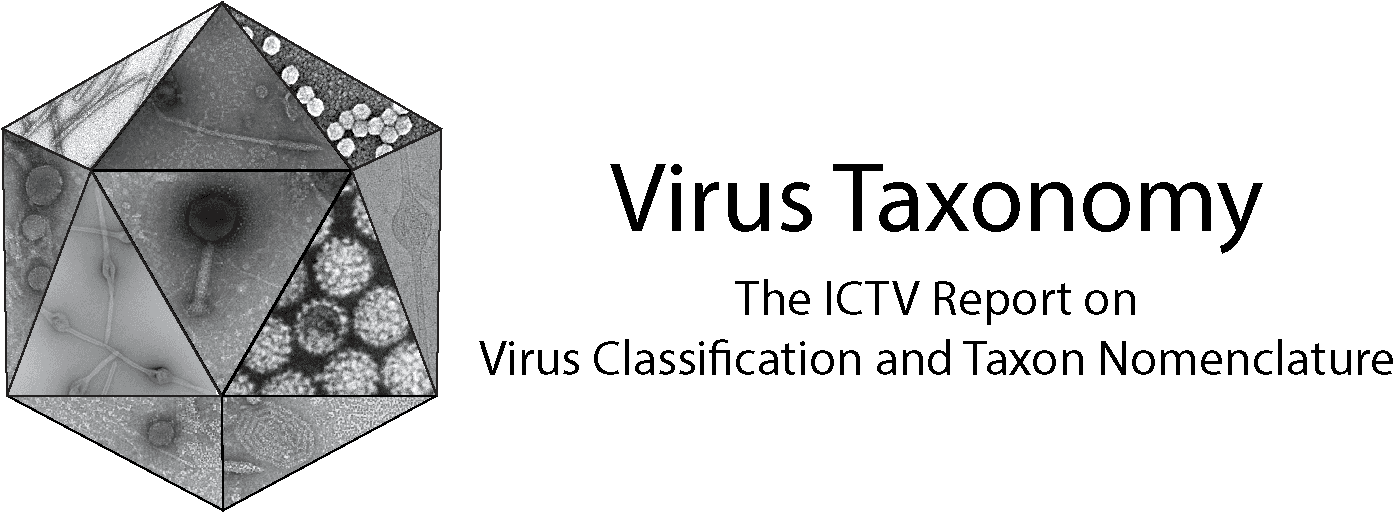References: Endornaviridae
Dulieu, P., Penin, P., Dulieu, H. & Gautheron, D. C. (1988). Purification of virus-like particles from Vicia faba and detection by ELISA in crude leaf extracts. Plant Sci 56, 9-14.
Fukuhara, T. & Gibbs, M. J. (2012). Family Endornaviridae. In Virus taxonomy: classification and nomenclature of viruses: Ninth report of the International Committee on Taxonomy of Viruses, pp. 519-521. Edited by A. M. Q. King, M. J. Adams, E. B. Carstens & E. J. Lefkowitz. San Diego: Elsevier.
Fukuhara, T., Moriyama, H. & Nitta, T. (1995). The unusual structure of a novel RNA replicon in rice. J Biol Chem 270, 18147-18149. [PubMed]
Fukuhara, T., Moriyama, H., Pak, J. Y., Hyakutake, H. & Nitta, T. (1993). Enigmatic double-stranded RNA in Japonica rice. Plant Mol Biol 21, 1121-1130. [PubMed]
Gibbs, M. J., Koga, R., Moriyama, H., Pfeiffer, P. & Fukuhara, T. (2000). Phylogenetic analysis of some large double-stranded RNA replicons from plants suggests they evolved from a defective single-stranded RNA virus. J Gen Virol 81, 227-233. [PubMed]
Hacker, C. V., Brasier, C. M. & Buck, K. W. (2005). A double-stranded RNA from a Phytophthora species is related to the plant endornaviruses and contains a putative UDP glycosyltransferase gene. J Gen Virol 86, 1561-1570. [PubMed]
Horiuchi, H., Moriyama, H. & Fukuhara, T. (2003). Inheritance of Oryza sativa endornavirus in F1 and F2 hybrids between japonica and indica rice. Genes Genet Syst 78, 229-234. [PubMed]
Horiuchi, H., Udagawa, T., Koga, R., Moriyama, H. & Fukuhara, T. (2001). RNA-dependent RNA polymerase activity associated with endogenous double-stranded RNA in rice. Plant Cell Physiol 42, 197-203. [PubMed]
Ikeda, K., Nakamura, H. & Matsumoto, N. (2003). Hypovirulent strain of the violet root rot fungus Helicobasidium mompa. J Gen Plant Path 69, 385-390.
Khalifa, M. E. & Pearson, M. N. (2014). Molecular characterisation of an endornavirus infecting the phytopathogen Sclerotinia sclerotiorum. Virus Res 189, 303-309. [PubMed]
Khankhum, S., Sela, N., Osorno, J. M. & Valverde, R. A. (2016). RNAseq Analysis of Endornavirus-Infected vs. Endornavirus-Free Common Bean (Phaseolus vulgaris) Cultivar Black Turtle Soup. Front Microbiol 7, 1905. [PubMed]
Khankhum, S. & Valverde, R. A. (2018). Physiological traits of endornavirus-infected and endornavirus-free common bean (Phaseolus vulgaris) cv Black Turtle Soup. Arch Virol 163, 1051-1056. [PubMed]
Lefebvre, A., Scalla, R. & Pfeiffer, P. (1990). The double-stranded RNA associated with the '447' cytoplasmic male sterility in Vicia faba is packaged together with its replicase in cytoplasmic membranous vesicles. Plant Mol Biol 14, 477-490. [PubMed]
Liu, H., Fu, Y., Xie, J., Cheng, J., Ghabrial, S. A., Li, G., Yi, X. & Jiang, D. (2012). Discovery of novel dsRNA viral sequences by in silico cloning and implications for viral diversity, host range and evolution. PLoS One 7, e42147. [PubMed]
Moriyama, H., Horiuchi, H., Nitta, T. & Fukuhara, T. (1999). Unusual inheritance of evolutionarily-related double-stranded RNAs in interspecific hybrid between rice plants Oryza sativa and Oryza rufipogon. Plant Mol Biol 39, 1127-1136. [PubMed]
Moriyama, H., Kanaya, K., Wang, J. Z., Nitta, T. & Fukuhara, T. (1996). Stringently and developmentally regulated levels of a cytoplasmic double-stranded RNA and its high-efficiency transmission via egg and pollen in rice. Plant Mol Biol 31, 713-719. [PubMed]
Nordenstedt, N., Marcenaro, D., Chilagane, D., Mwaipopo, B., Rajamäki, M. L., Nchimbi-Msolla, S., Njau, P. J. R., Mbanzibwa, D. R. & Valkonen, J. P. T. (2017). Pathogenic seedborne viruses are rare but Phaseolus vulgaris endornaviruses are common in bean varieties grown in Nicaragua and Tanzania. PLoS One 12, e0178242. [PubMed]
Okada, R., Kiyota, E., Sabanadzovic, S., Moriyama, H., Fukuhara, T., Saha, P., Roossinck, M. J., Severin, A. & Valverde, R. A. (2011). Bell pepper endornavirus: molecular and biological properties, and occurrence in the genus Capsicum. J Gen Virol 92, 2664-2673. [PubMed]
Okada, R., Yong, C. K., Valverde, R. A., Sabanadzovic, S., Aoki, N., Hotate, S., Kiyota, E., Moriyama, H. & Fukuhara, T. (2013). Molecular characterization of two evolutionarily distinct endornaviruses co-infecting common bean (Phaseolus vulgaris). J Gen Virol 94, 220-229. [PubMed]
Osaki, H., Nakamura, H., Sasaki, A., Matsumoto, N. & Yoshida, K. (2006). An endornavirus from a hypovirulent strain of the violet root rot fungus, Helicobasidium mompa. Virus Res 118, 143-149. [PubMed]
Park, Y., Chen, X. & Punja, Z. K. (2006). Diversity, complexity and transmission of double-stranded RNA elements in Chalara elegans (synanam. Thielaviopsis basicola). Mycol Res 110, 697-704. [PubMed]
Roossinck, M. J. (2010). Lifestyles of plant viruses. Philos Trans R Soc Lond B Biol Sci 365, 1899-1905. [PubMed]
Roossinck, M. J., Sabanadzovic, S., Okada, R. & Valverde, R. A. (2011). The remarkable evolutionary history of endornaviruses. J Gen Virol 92, 2674-2678. [PubMed]
Sabanadzovic, S., Wintermantel, W. M., Valverde, R. A., McCreight, J. D. & Aboughanem-Sabanadzovic, N. (2016). Cucumis melo endornavirus: Genome organization, host range and co-divergence with the host. Virus Res 214, 49-58. [PubMed]
Sela, N., Luria, N. & Dombrovsky, A. (2012). Genome assembly of bell pepper endornavirus from small RNA. J Virol 86, 7721. [PubMed]
Song, D., Cho, W. K., Park, S. H., Jo, Y. & Kim, K. H. (2013). Evolution of and horizontal gene transfer in the Endornavirus genus. PLoS One 8, e64270. [PubMed]
Stielow, B., Klenk, H. P. & Menzel, W. (2011). Complete genome sequence of the first endornavirus from the ascocarp of the ectomycorrhizal fungus Tuber aestivum Vittad. Arch Virol 156, 343-345. [PubMed]
Urayama, S., Moriyama, H., Aoki, N., Nakazawa, Y., Okada, R., Kiyota, E., Miki, D., Shimamoto, K. & Fukuhara, T. (2010). Knock-down of OsDCL2 in rice negatively affects maintenance of the endogenous dsRNA virus, Oryza sativa endornavirus. Plant Cell Physiol 51, 58-67. [PubMed]
Valverde, R. A. & Gutierrez, D. L. (2007). Transmission of a dsRNA in bell pepper and evidence that it consists of the genome of an endornavirus. Virus Genes 35, 399-403. [PubMed]

